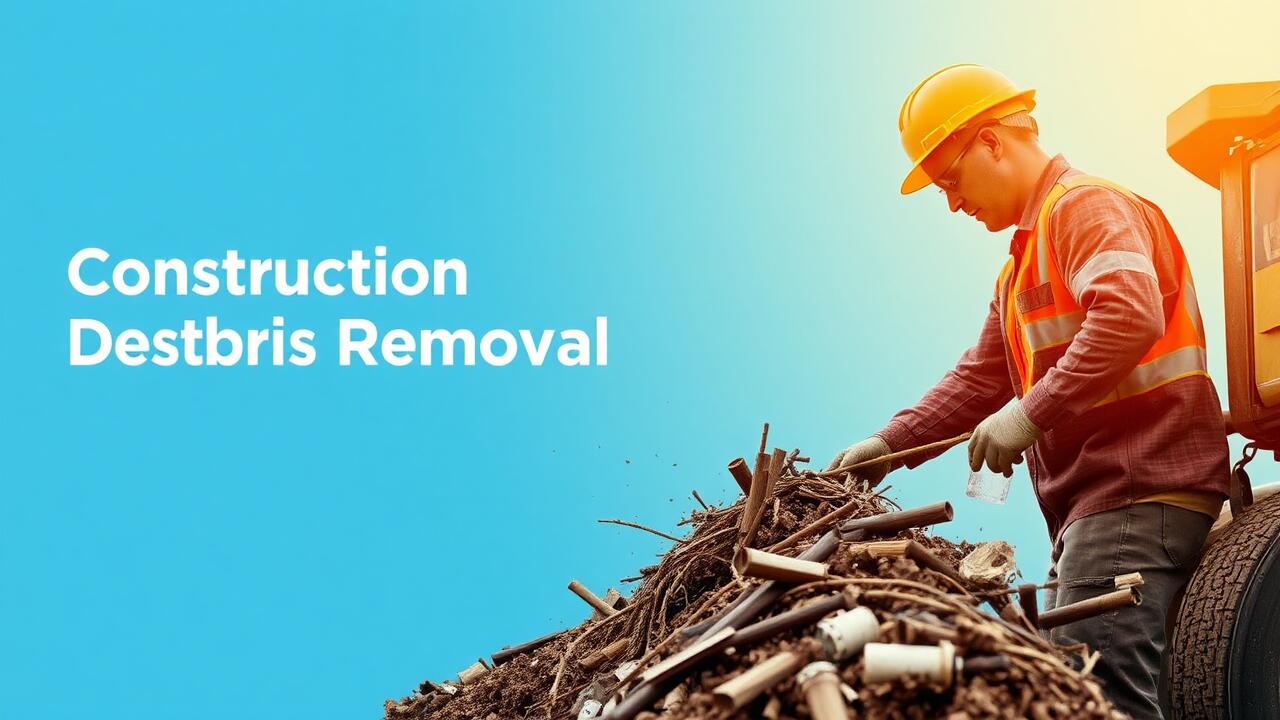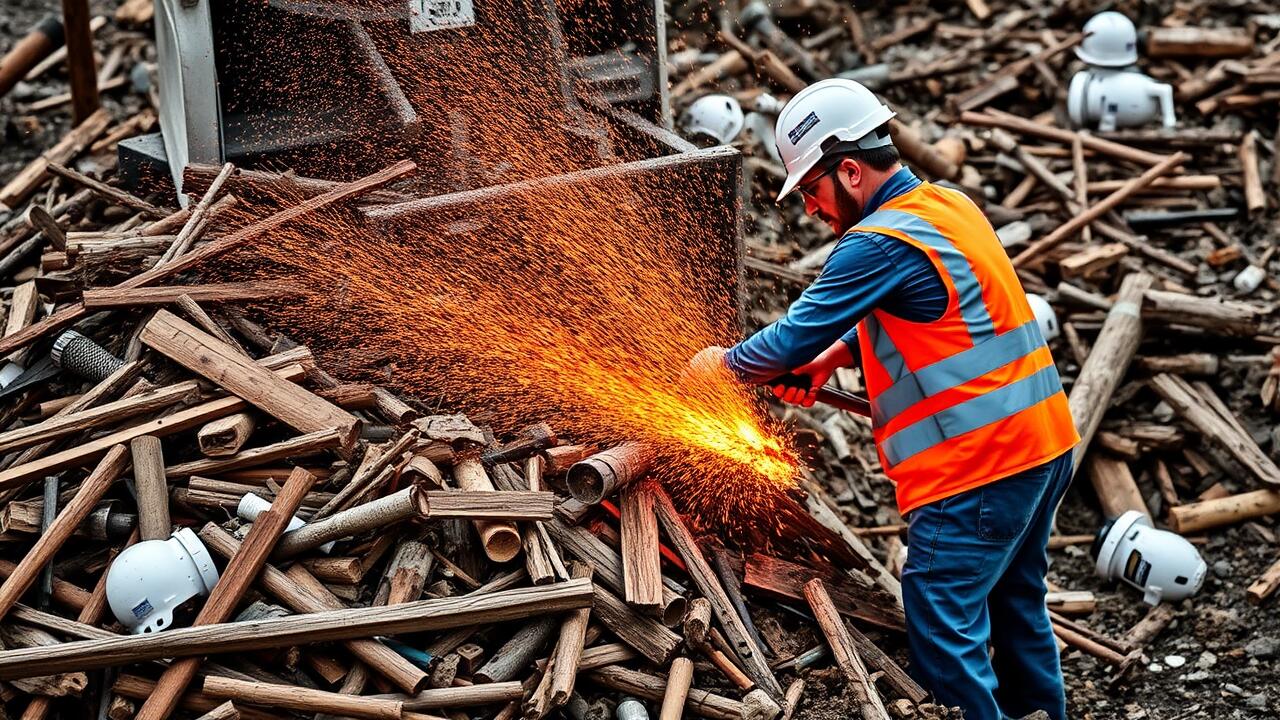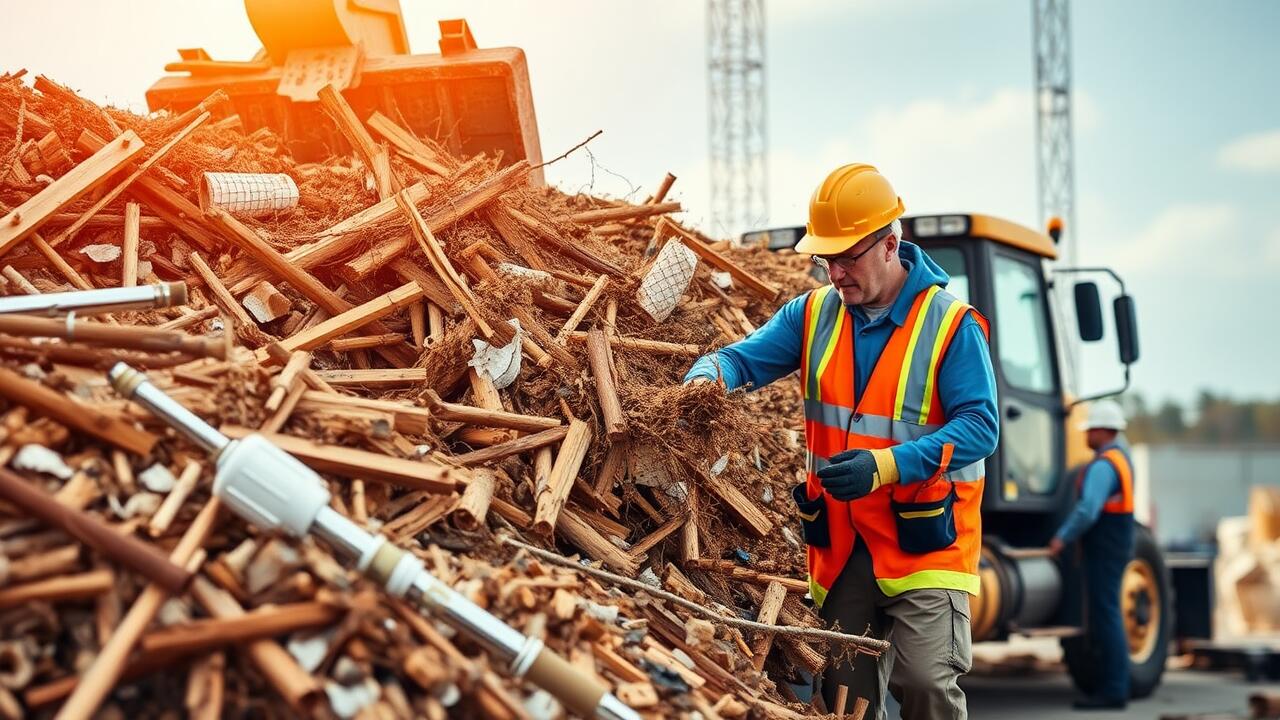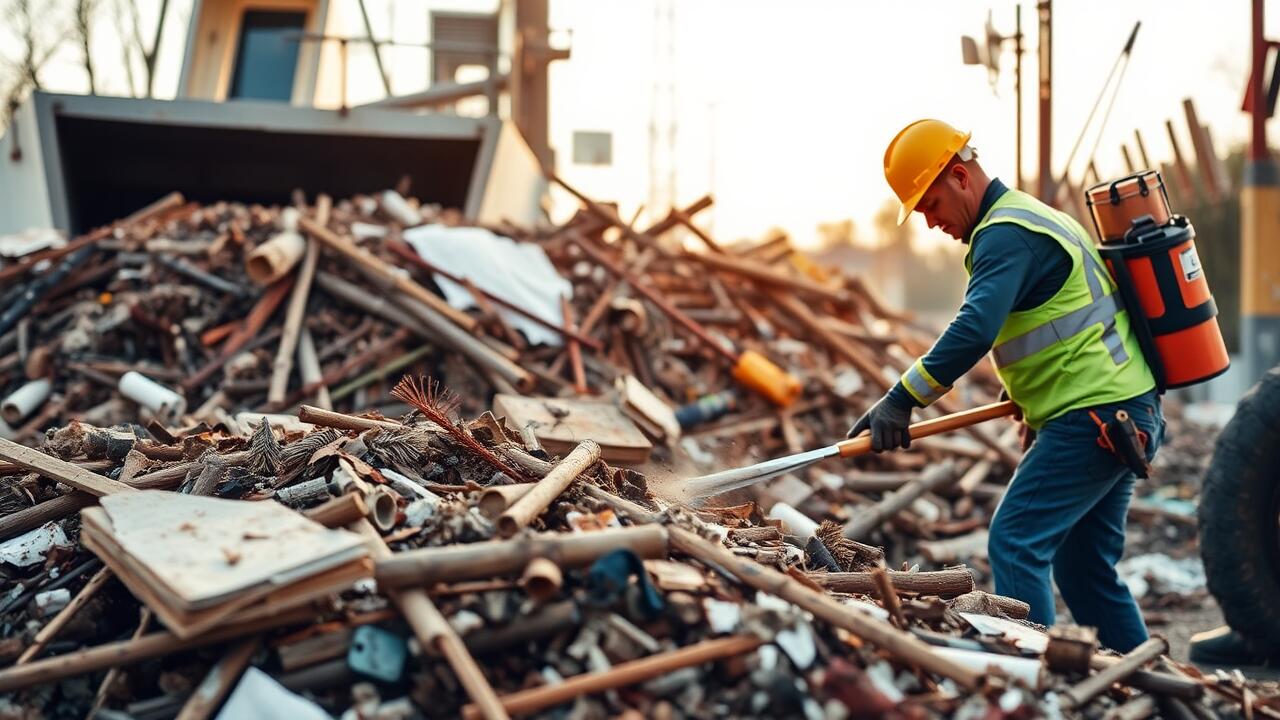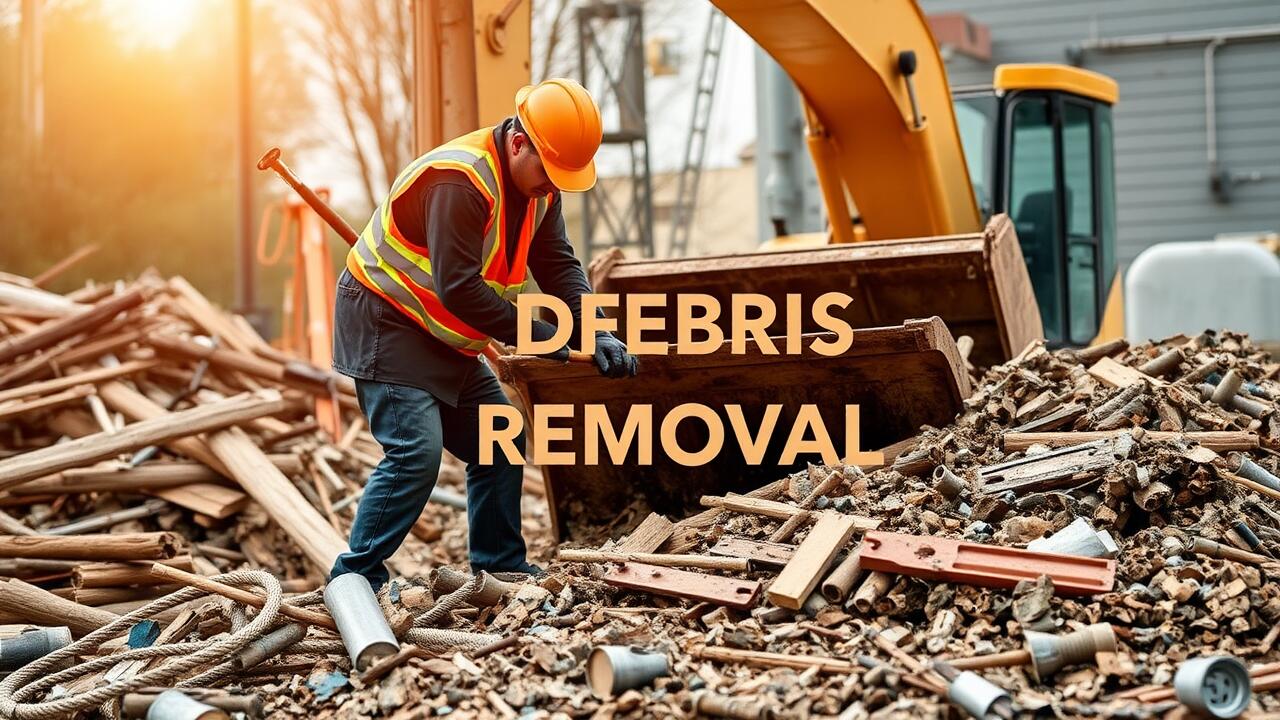
Transportation of Hazardous Materials
The transportation of hazardous materials within the construction sector requires careful planning and execution. Each type of hazardous material is subject to specific regulations that dictate how it should be handled and transported. This includes ensuring that appropriate vehicles are used, which are designed to contain spills and prevent contamination during transit. Workers involved in the process must be thoroughly trained in identifying hazardous substances and understanding the associated risks of transportation.
When it comes to practical applications, businesses frequently engage specialized companies for Construction Debris Removal in Alhambra, Phoenix. These services are essential in ensuring hazardous materials are safely removed from job sites and disposed of correctly. The transportation process not only involves moving materials from one location to another but also requires meticulous record-keeping and compliance with local and federal regulations to avoid legal issues and ensure public safety.
Safety Protocols During Transportation
Ensuring safety during the transportation of hazardous materials is crucial for protecting workers, the public, and the environment. Proper labeling of all materials is essential, as it informs transport personnel of potential hazards. Use of appropriate containers, designed specifically for hazardous substances, reduces the risk of spills or leaks. Additionally, drivers must receive training specific to the materials they are transporting. This training covers emergency response procedures in case of accidents or unforeseen incidents.
Implementing a thorough communication plan enhances safety during transport. Ensuring that all team members are aware of the routes, potential hazards, and emergency contacts can prevent dangerous situations. Regular inspections of transportation vehicles and their cargo ensure compliance with safety regulations. Companies involved in Construction Debris Removal in Alhambra, Phoenix, should prioritize these protocols to safeguard their teams and communities. Documenting all steps taken during transportation can assist in tracking and improving safety practices over time.
Proper Disposal Methods for Hazardous Waste
Safe disposal of hazardous waste is crucial in maintaining environmental integrity and human health. Various methods exist for disposing of hazardous materials, including incineration, secure landfilling, and recycling. Incineration involves burning materials at high temperatures, effectively reducing waste volume and destroying harmful toxins. Secure landfilling must adhere to specific regulations, ensuring that hazardous waste is contained and monitored to avoid soil and groundwater contamination. Recycling of certain hazardous materials can also provide a sustainable alternative, allowing valuable resources to be recovered while minimizing environmental impact.
In the context of construction sites, managing hazardous waste involves specialized procedures that vary significantly based on the nature of the materials. Construction Debris Removal in Alhambra, Phoenix, for instance, emphasizes the importance of following local regulations and guidelines to minimize risks associated with hazardous waste disposal. This process includes categorizing waste, using appropriate containment methods, and ensuring that removal services are certified to handle hazardous materials. Proper training for personnel involved in waste management further enhances compliance and safety on construction sites.
Disposing of Materials According to Regulations
Disposing of hazardous construction materials in accordance with regulations is essential for both environmental protection and worker safety. Each state or locality typically has specific guidelines outlining how to handle, transport, and dispose of various types of hazardous waste. Proper categorization of materials is crucial, as different substances may require unique disposal methods. Common hazardous waste types include paints, solvents, and asbestos-containing materials, each subject to stringent regulations to ensure safe handling and limit environmental impact.
In areas like Alhambra, Phoenix, professionals engaged in construction projects need to be mindful of local ordinances that govern hazardous waste disposal. Failure to comply with these regulations can result in significant penalties and damage to the company’s reputation. Utilizing services like Construction Debris Removal in Alhambra, Phoenix not only aids compliance but also ensures that materials are handled safely and appropriately. Working with certified disposal contractors guarantees that hazardous waste is disposed of in ways that meet regulatory standards, fostering a safer environment for both workers and the surrounding community.
Risk Management Strategies in Construction
Effective risk management strategies in construction involve identifying potential hazards and developing proactive measures to mitigate them. A comprehensive risk assessment should be conducted at the outset of any project. This assessment not only evaluates environmental factors but also considers the types of materials being used and the processes involved. By engaging all stakeholders, including contractors and safety officers, a more thorough understanding of risks can be achieved. This collaborative approach helps in formulating tailored strategies to address specific concerns, ensuring that all safety protocols are followed throughout the construction lifecycle.
Incorporating practices such as regular training and safety drills is essential in maintaining a culture of safety on-site. Clear communication about the proper handling and disposal of hazardous materials is vital to reduce accidents and incidents. Regular reviews of safety procedures can help identify areas for improvement. Additionally, implementing services like Construction Debris Removal in Alhambra, Phoenix ensures that waste materials are handled in compliance with regulations. This not only helps in maintaining safety standards but also minimizes environmental impact, reflecting a commitment to sustainable construction practices.
Developing a Hazard Communication Plan
A hazard communication plan is essential for any construction site handling hazardous materials. This plan outlines the methods for communicating potential risks associated with materials in use. Workers must be trained to recognize labels, safety data sheets, and symbols that indicate hazardous substances. Effective communication minimizes the risk of accidents and ensures that all team members are prepared to respond appropriately to emergencies.
When developing a hazard communication plan, it is crucial to include information specific to the types of materials on-site. This includes processes for identifying hazardous waste and proper disposal methods. Companies involved in construction debris removal in Alhambra, Phoenix, should tailor their plans to comply with local regulations while maintaining clear communication pathways. Regular training sessions can reinforce safety protocols, ensuring that workers understand and follow procedures for managing hazardous materials.
FAQS
What are hazardous construction materials?
Hazardous construction materials are substances that pose a risk to health, safety, or the environment during their use, handling, or disposal. These can include chemicals, asbestos, lead, and other toxic substances commonly found in construction sites.
How should hazardous materials be transported?
Hazardous materials should be transported following safety protocols that include proper labeling, using appropriate containers, maintaining a secure transport vehicle, and ensuring that all personnel involved are trained in handling hazardous materials.
What are the proper disposal methods for hazardous waste?
Proper disposal methods for hazardous waste include using licensed disposal facilities, following local and federal regulations, and employing specialized waste disposal services to ensure safety and compliance.
Why is it important to dispose of hazardous materials according to regulations?
Disposing of hazardous materials according to regulations is crucial to protect public health, safeguard the environment, and avoid legal penalties. Improper disposal can lead to contamination of soil and water, posing risks to human and ecological health.
What is a Hazard Communication Plan?
A Hazard Communication Plan is a strategy developed to inform employees about the hazards associated with chemicals they may encounter, including proper handling, storage, and disposal methods, and outlining emergency procedures in case of exposure or spills.
